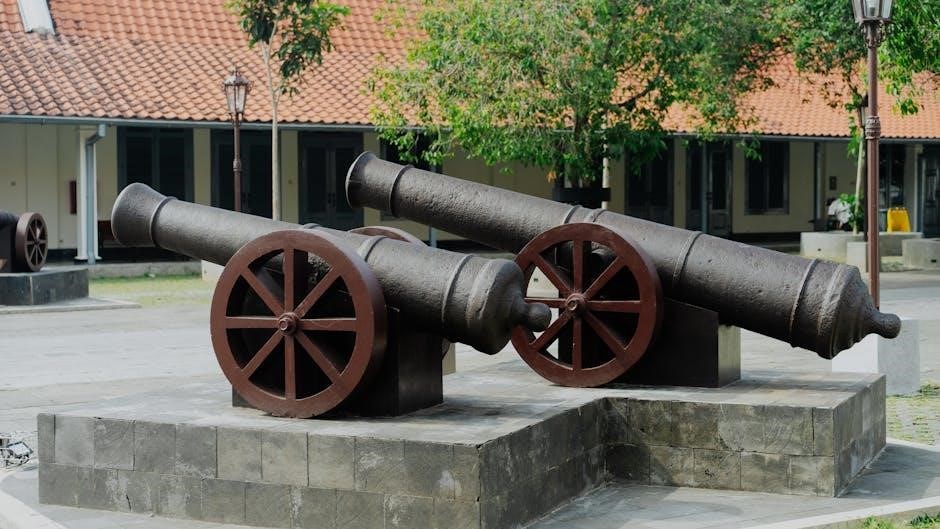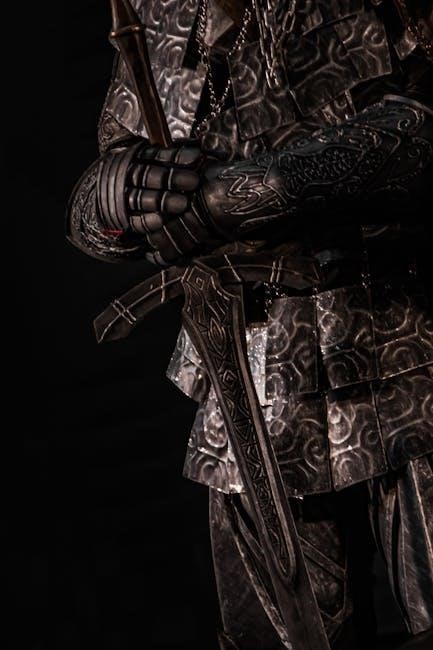
civil war sword identification guide
This guide assists in identifying swords from the American Civil War (1861-1865). Edged weapons were vital then, symbolizing honor. We focus on swords from both sides, Union and Confederate, aiding collectors in identifying and dating these historical artifacts. This site is designed to aid in the identification of items in your collection.
Key Features of Civil War Swords

Identifying Civil War swords requires careful attention to key features. These features help distinguish authentic pieces from later reproductions. Begin by examining the blade. Look for markings, which may include the manufacturer’s name, date of production, or inspector’s initials. The Ames Manufacturing Company was a prominent supplier, so their mark is common. Blade curvature is also important. Infantry swords were typically straight, while cavalry sabers had a distinct curve. Next, assess the hilt. The material (brass, bone, or ivory) and design can indicate the sword’s origin and purpose. Confederate swords often have unique hilt shapes and materials due to supply shortages. The grip, usually wrapped with wire or leather, can also offer clues. Pay attention to the scabbard, its material (steel or leather), and any accompanying brass fittings. Scabbards often bear markings or designs that match the sword. Finally, consider the overall condition and patina. Authentic Civil War swords will show signs of age and use. Remember, straight-edged weapons of this period, are infantry swords. Though infantry officers sometimes used curved weapons, this was contrary to the designed purpose of the weapon.
Identifying Union Officer Swords
Union officer swords are identifiable through specific characteristics reflecting their status and the Union’s manufacturing capabilities. These swords were privately purchased, making them badges of rank and status. Look for high-quality materials such as polished steel blades, brass hilts, and often, ivory or bone grips. Many Union officer swords feature intricate designs and engravings, including patriotic motifs like eagles or “US” markings. The Model 1850 Foot Officer’s Sword is a common type, characterized by its ornate brass hilt and blackened steel scabbard with brass fittings. Union swords often bear inspector marks, indicating government quality control. Common inspectors include A.D.K. (Andrew D. King) and G.G.S. (George G. Saunders). Manufacturer markings, particularly those of Ames Manufacturing Company, are also prevalent. Union officer swords typically have well-made scabbards, often with detailed brass mounts. The overall construction is generally of higher quality compared to Confederate swords due to the Union’s superior industrial capacity. Remember to check the ricasso (the area where the blade meets the hilt) for maker’s marks and inspector stamps. The presence of these marks, along with quality materials and construction, are key indicators of a Union officer sword.
Identifying Confederate Swords

Identifying Confederate swords involves looking for distinctive features born from the South’s limited industrial resources during the Civil War. Confederate swords often display a more rustic or crude construction compared to their Union counterparts. Materials may be less refined, with iron or lower-grade steel used in blades and simpler brass or even cast-iron hilts. Many Confederate swords were produced by smaller local manufacturers, resulting in variations in design and quality. Common Confederate sword types include the Boyle, Gamble & MacFee sword and the Haiman Cavalry Saber. The Haiman saber, made by L. Haiman & Brother in Columbus, Georgia, is recognizable by its distinct hilt shape and heavy wire-wrapped grip. Confederate swords may lack the detailed engravings and embellishments found on Union swords. Scabbards can be made of leather or iron, often with minimal brass fittings. Inspector marks are less common on Confederate swords, but some may feature maker’s marks or initials. Due to resource scarcity, Confederate swords sometimes incorporate captured Union sword parts or repurposed materials. Check for unique hilt designs or blade shapes that deviate from standard Union patterns. The overall finish may be rougher, with signs of hand-forging and less precise machining. Identifying Confederate swords requires careful examination of materials, construction, and markings, keeping in mind the limitations faced by Southern manufacturers.
Common Manufacturers and Markings
Identifying common manufacturers and markings is crucial for authenticating Civil War swords. Several manufacturers, both American and foreign, supplied swords to the Union and Confederate armies. In the North, Ames Manufacturing Company was a major supplier, producing a wide range of swords, including officer swords and cavalry sabers. Their swords are typically marked with the “Ames Mfg. Co.” name and the location, “Chicopee, Mass.” Other prominent Union sword makers include Horstmann, located in Philadelphia, and Tiffany & Co. Swords made by these companies often feature elaborate designs and high-quality materials. Confederate swords were produced by smaller, regional manufacturers such as Boyle, Gamble & MacFee in Richmond, Virginia, and L. Haiman & Brother in Columbus, Georgia. These swords often have simpler designs and may lack detailed markings. Markings on Civil War swords can include the manufacturer’s name, location, and date of production. Union swords may also have inspector marks, such as “U.S.” indicating government acceptance, along with the inspector’s initials. Common inspector initials include A.D.K. for Andrew D. King and G.G.S. for George G. Saunders. Confederate swords are less likely to have inspector marks, but may have maker’s marks or initials. The presence and style of these markings can help determine the sword’s origin and authenticity. Examining the ricasso (the flat part of the blade near the hilt) is important, as this is where many manufacturers and inspectors placed their marks. Comparing these marks to known examples and historical records is essential for accurate identification.
Ames Manufacturing Company
The Ames Manufacturing Company of Chicopee, Massachusetts, played a pivotal role in supplying swords to the Union Army during the Civil War. Founded in 1832, Ames quickly became one of the largest and most reputable arms manufacturers in the United States. The company produced a wide array of swords, catering to various military branches and ranks. Among the most common Ames swords are the Model 1850 Army Staff & Field Officer’s Sword, the Model 1860 Light Cavalry Saber, and the Model 1840 NCO sword. Ames swords are easily identifiable by their distinct markings. Typically, the company’s name, “Ames Mfg. Co.,” is stamped on the ricasso of the blade, often accompanied by the location “Chicopee, Mass.” The date of manufacture is also frequently included, providing valuable information for dating the sword. In addition to the company markings, Ames swords often bear U.S. government inspection marks, indicating that they met the required standards for military use. These inspection marks typically consist of the initials of the inspector, such as “A.D.K.” for Andrew D. King or “G.G.S.” for George G. Saunders. These initials are usually stamped on the ricasso along with the “U.S.” mark and the year of inspection. The quality of materials and craftsmanship in Ames swords is generally high, reflecting the company’s commitment to producing reliable and durable weapons. The blades are typically made of high-quality steel, and the hilts are often made of brass or other durable materials. The grips may be made of leather, wood, or other materials, depending on the specific model; The Ames Manufacturing Company’s contributions to the Union war effort were significant, and their swords remain highly sought after by collectors today. Identifying an Ames sword involves looking for the company’s markings, U.S. inspection marks, and the overall quality of construction.
Inspector Marks on Swords
Inspector marks on Civil War swords offer crucial insights into their authenticity and history. These markings, typically stamped on the blade’s ricasso, indicate that the sword passed U.S. government inspection, confirming it met specific quality standards for military use. Identifying these marks is vital for collectors seeking to verify a sword’s provenance. Common inspector initials include “A.D.K.” for Andrew D. King, an armory sub-inspector known to have inspected Ames manufactured cavalry sabers, “G.G.S.” for George G. Saunders, and “W.A.T.” for William Anderson Thornton. Other inspectors include Robert P. Barry (R.P.B), Robert P. Beales (R.P.B), William Dickinson (W.D), Henry D. Hastings (H.D.H), and Charles E. Wilson (C.E.W). The presence and legibility of these marks significantly impact a sword’s value. Faded or missing marks can raise questions about authenticity, while clear, well-defined marks enhance its desirability. Some state-purchased swords lacked government inspection, making those with identifiable marks particularly significant. Understanding the context of these marks—the inspector’s role, the period they were active—adds depth to a sword’s story. For example, rack numbers found on some sabers suggest continued service post-Civil War, possibly during the Indian War era of the 1870s-80s. Collectors should consult resources like “Civil War Army Swords” by John Thillman to cross-reference marks and learn about specific inspectors. Online forums and databases dedicated to American swords also offer valuable information. By carefully examining inspector marks, collectors can uncover valuable details about a sword’s origin, usage, and place in Civil War history, distinguishing genuine artifacts from replicas.


Differentiating Swords from Sabers
Distinguishing between swords and sabers is essential for Civil War weapon identification. While both are edged weapons, key differences lie in their blade design and intended use. Swords, particularly those carried by infantry officers, typically feature straight or only slightly curved blades. These were designed primarily for thrusting, aligning with the close-quarters combat scenarios envisioned for infantry. In contrast, sabers, commonly used by cavalry officers, boast a more pronounced curve. This curvature facilitated slashing attacks from horseback, making them ideal for mounted combat. The blade’s cross-section also differs; swords often have a rhombic cross-section, enhancing their thrusting capability. Sabers, on the other hand, may have a flatter cross-section optimized for cutting. Hilt and grip designs further aid differentiation. Sword hilts tend to be simpler, focusing on providing a secure grip for thrusting. Sabers often feature more elaborate hilts, sometimes with handguards to protect the rider’s hand during combat. Understanding these design nuances helps identify a weapon’s intended user and military role. For example, a straight-bladed weapon is more likely an infantry officer’s sword, while a curved blade suggests a cavalry saber. However, exceptions exist; some infantry officers carried curved weapons, though this deviated from standard practice. Examining markings and manufacturer details can provide further clarification. Certain manufacturers specialized in specific weapon types, and markings may indicate the intended user (e.g., “U;S.” for Union forces). By carefully analyzing blade shape, cross-section, hilt design, and markings, collectors can accurately differentiate between swords and sabers, enhancing their understanding of Civil War weaponry. Knowing the difference between a sword and a saber will help you to identify civil war swords in your collection.